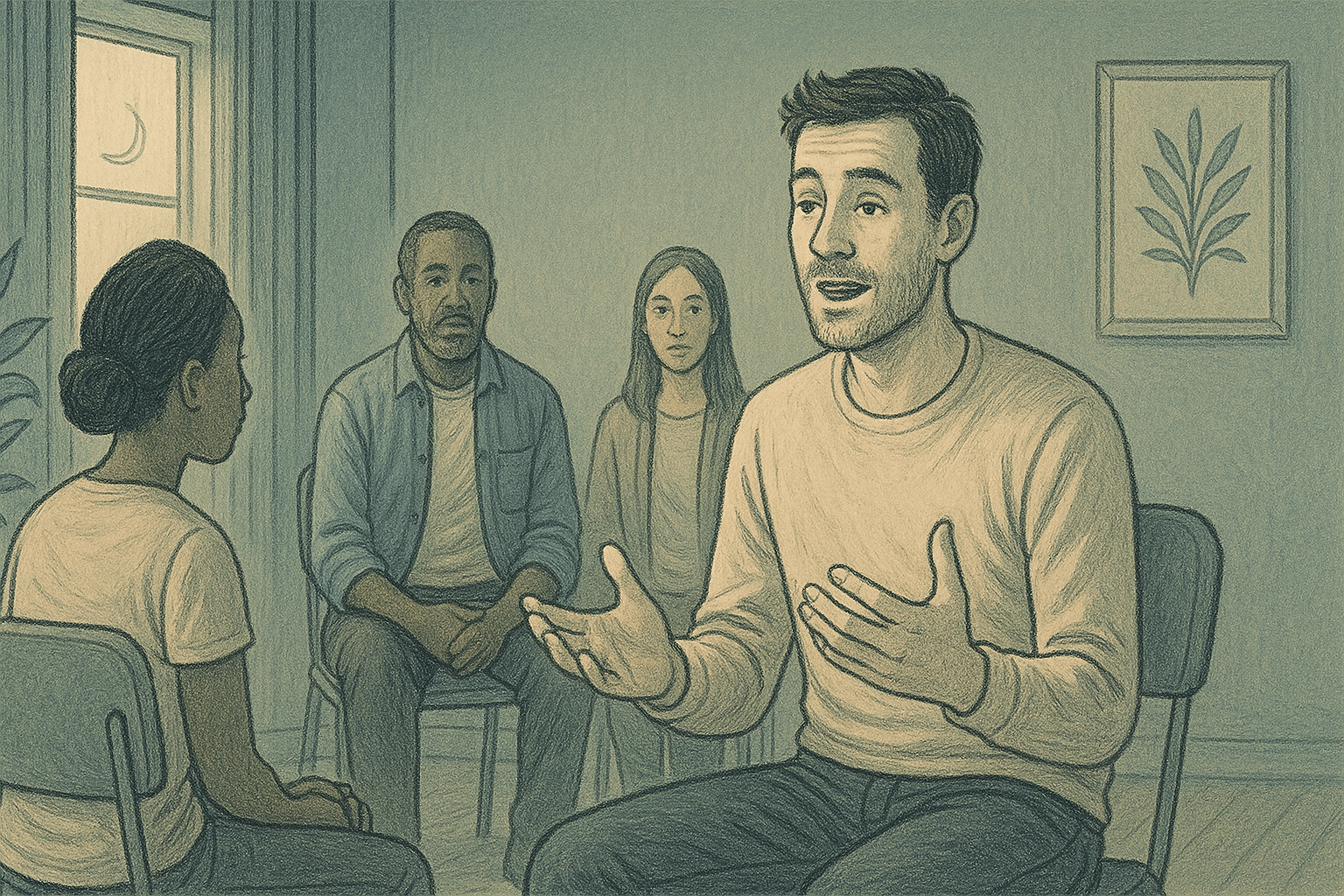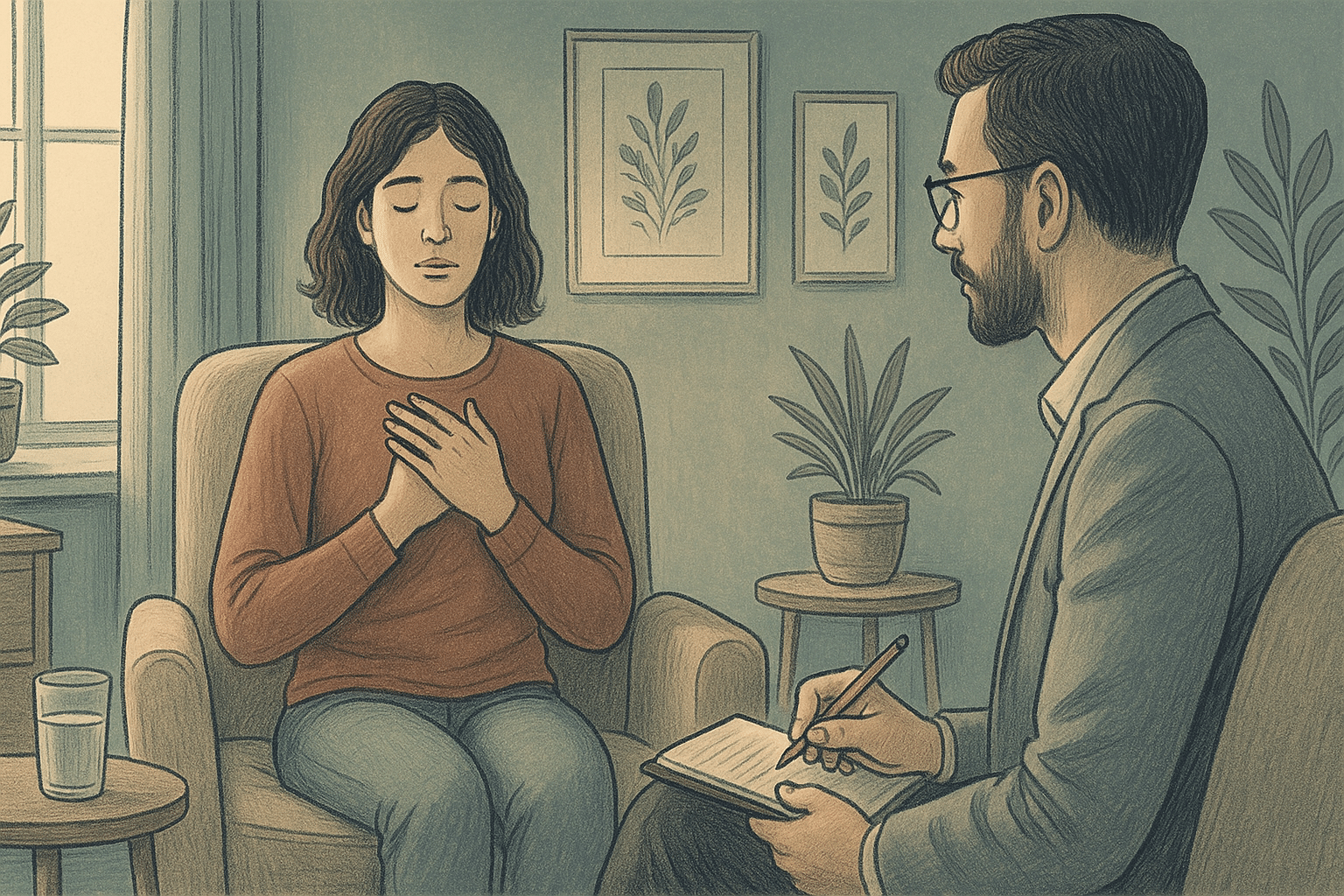Key Takeaways
- Panic attacks can occur unexpectedly while driving, but recognizing early signs can help you manage them effectively.
- Deep breathing and mindfulness practices may help you regain control during a panic attack.
- Identifying safe stopping locations can prevent accidents and provide a space to calm down.
- Long-term strategies like Cognitive Behavioral Therapy (CBT) and gradual exposure therapy can reduce the frequency of panic attacks.
- A Mission for Michael (AMFM) offers comprehensive, personalized treatment for driving anxiety through evidence-based therapies like CBT, Exposure Therapy, and Mindfulness-Based Stress Reduction at locations across California, Virginia, and Washington.
Recognizing Panic Triggers
Panic attacks often feel like they come out of nowhere, but there are usually underlying triggers or stressors. By identifying these, you can prepare and possibly prevent a full-blown attack.
Common Causes of Panic Attacks While Driving
Several factors can lead to panic attacks while driving. These include:
- Previous traumatic driving experiences
- Generalized anxiety or stress unrelated to driving
- Driving-related phobias (e.g., fear of bridges, tunnels, highways, or enclosed spaces)
- Fear of losing control or being unable to escape (e..g, feeling trapped in traffic or on highways), as well as fear of accidents or injury
- Physical factors (e.g., lack of sleep, hunger)
- Stressful or emotional situations prior to driving like work stress, relationship issues)
Warning Signs of a Panic Attack
Being aware of the warning signs of a panic attack can make a significant difference. These signs often include:
- Rapid heartbeat or palpitations
- Shortness of breath
- Dizziness or lightheadedness
- Feeling of impending doom or loss of control
When you notice these symptoms, act quickly to prevent the situation from escalating.
Founded in 2010, A Mission For Michael (AMFM) offers specialized mental health care across California, Minnesota, and Virginia. Our accredited facilities provide residential and outpatient programs, utilizing evidence-based therapies such as CBT, DBT, and EMDR.
Our dedicated team of licensed professionals ensures every client receives the best care possible, supported by accreditation from The Joint Commission. We are committed to safety and personalized treatment plans.
Immediate Response Actions
When you feel a panic attack coming on, having a plan in place can help you stay calm and focused. Immediate response actions are crucial for maintaining safety on the road.
Deep Breathing Techniques

Deep breathing is one of the most effective ways to calm your nervous system during a panic attack.
Here’s a simple technique you can try:
- Take a slow, deep breath in through your nose for a count of four.
- Hold your breath for a count of four.
- Exhale slowly through your mouth for a count of four.
- Repeat this process until you feel your anxiety decrease.
Practicing deep breathing regularly can also help reduce overall anxiety levels.
Safe Stopping Locations
If you’re experiencing a severe panic attack, finding a safe place to pull over is essential. Look for rest stops or parking lots, or areas away from traffic where you can safely stop your vehicle.
Once stopped, focus on your breathing and allow yourself time to calm down before continuing your journey.
Mindfulness Practices
Mindfulness can help ground you in the present moment and reduce feelings of panic. Try these simple practices:
- Focus on the feel of the steering wheel in your hands.
- Notice the sounds around you, such as the hum of the engine or the wind outside.
- Engage your senses by looking at your surroundings, listening to calming music, or even smelling a soothing scent like lavender.
By anchoring yourself in the present, you can alleviate the overwhelming sensations of a panic attack.
Long-Term Coping Strategies
Cognitive Behavioral Techniques
Cognitive Behavioral Therapy (CBT) focuses on identifying and changing negative thought patterns that contribute to anxiety. By altering these thoughts, you can change how you react to anxiety-inducing situations, such as driving.
One effective CBT technique is cognitive restructuring. This involves recognizing irrational or unhelpful thoughts and replacing them with more balanced, realistic ones. For example, if you think, “I can’t handle driving,” reframe it to, “I’ve driven safely many times before, and I can do it again.”
Support Systems

Building a support system is essential in managing panic attacks while driving.
Having someone to talk to about your experiences can provide comfort and encouragement. Friends, family, and support groups can all be valuable resources.
Consider joining a support group specifically for individuals who experience anxiety while driving. Sharing your experiences with others who understand can be incredibly validating and helpful.
Gradual Exposure Therapy
Gradual exposure therapy is a technique that involves facing your fears in a controlled and systematic way. This approach helps desensitize you to the anxiety-provoking situation, making it more manageable over time.
Start by identifying specific driving scenarios that trigger your anxiety. Rank them from least to most anxiety-inducing. Begin with the least stressful situation and practice it repeatedly until your anxiety decreases.
As you gain confidence, gradually move to more challenging scenarios. This might include driving longer distances, driving in busy streets, or driving at night. The key is to progress at your own pace, ensuring each step feels manageable before moving on to the next.
Preventive Measures for Drivers
Regular Relaxation Exercises
Incorporating regular relaxation exercises into your routine can significantly reduce anxiety levels. Techniques like deep breathing, progressive muscle relaxation, and guided imagery can help calm your mind and body.
Deep breathing exercises, as mentioned earlier, are particularly effective. Practicing these exercises regularly can help you manage stress and prevent panic attacks from occurring.
Stress Reduction Practices
Stress reduction is a major component in preventing panic attacks. Identifying and managing sources of stress can make a significant difference in your overall anxiety levels.
Consider adopting stress-reducing practices such as regular exercise, adequate sleep, and time management techniques.
Maintaining a Healthy Lifestyle
A healthy lifestyle is foundational in managing anxiety. Eating a balanced diet, staying hydrated, and getting enough sleep are all crucial components. By taking care of your physical health, you create a strong foundation for managing anxiety and preventing panic attacks while driving.
Seek Professional Support
While self-help strategies are beneficial, professional support may be necessary for persistent or severe anxiety. Therapists and counselors can provide guidance and support customized to your specific needs.
Therapy Options

Therapy is a powerful tool for managing panic attacks.
Various therapy options are available for managing panic attacks. CBT, as discussed earlier, is one of the most effective treatments. Other options include exposure therapy and mindfulness-based therapies.
Consulting a mental health professional can help you determine the best approach for your situation, providing you with the tools and support needed to manage anxiety effectively.
Medication Considerations
Antidepressants and benzodiazepines are commonly prescribed for anxiety disorders and can help reduce the frequency and intensity of panic attacks, potentially making daily activities like driving more manageable.
However, these medications (particularly benzodiazepines and sedating antidepressants) may impair driving ability due to side effects such as drowsiness and slowed reaction times. So, consult with a healthcare provider and avoid driving until you understand how the medication affects you.
Finding a Specialist
Look for a mental health specialist who understands anxiety disorders. A therapist with experience in treating panic attacks can provide personalized strategies and support. Consider seeking a referral from your primary care doctor or using online resources to find a qualified therapist in your area.
When choosing a specialist, ensure they are licensed and have a good track record in treating anxiety. It’s also important to find someone you feel comfortable with, as a strong therapeutic relationship is key to effective treatment.
AMFM: Your Road to Panic-Free Driving
At AMFM Mental Health Treatment Center, we understand that experiencing panic attacks while driving isn’t just frightening, it can severely restrict your independence and quality of life.

Our comprehensive approach combines evidence-based therapies like CBT and Group Therapy with personalized coping strategies specifically customized for driving situations.
What sets us apart is our focus on both symptom management and addressing underlying anxiety triggers. Our expert clinicians work with you to develop a deep understanding of your specific driving anxiety patterns, creating customized tools that work for your unique circumstances.
Through our treatment programs across California, Virginia, and Washington, we’ve helped countless individuals transform their relationship with driving—from dreading every moment to confidently navigating the roads.
Don’t let panic attacks limit where you can go or what you can experience. Contact AMFM today for a free assessment and take the first step toward reclaiming your freedom to drive without fear.
Frequently Asked Questions (FAQ)
What should I do if I feel panicked while driving?
If you feel a panic attack coming on while driving, the first step is to remain as calm as possible. Use deep breathing techniques to stabilize your breathing and find a safe place to pull over if necessary. Focus on grounding yourself by engaging your senses and reminding yourself that the feeling will pass.
Are panic attacks while driving common?
Yes, panic attacks while driving are more common than you might think. Many people experience anxiety related to driving, and panic attacks can occur in stressful or unfamiliar situations. Understanding that you’re not alone can be comforting and encourage you to seek help.
Can therapy help with driving anxiety?
Therapy is highly effective in managing driving anxiety. Cognitive Behavioral Therapy (CBT) and exposure therapy help you understand and reframe negative thought patterns, gradually reducing your anxiety over time.
Should I avoid driving altogether if I have panic attacks?
Avoiding driving altogether may seem like a solution, but it can actually reinforce anxiety. Instead, work on building your confidence and coping skills. Gradual exposure therapy can help you face your fears in a controlled way, ultimately reducing your anxiety over time.
How can cognitive behavioral techniques help with driving anxiety?
CBT techniques are highly effective for managing panic attacks while driving by addressing the underlying thought patterns that fuel anxiety. One key technique is cognitive restructuring, which involves identifying catastrophic thoughts (e.g., “I’ll crash” or “I’ll lose control”) and replacing them with more balanced perspectives (e.g., “I’ve driven safely many times before” or “Even if I feel anxious, I can manage it”). AMFM offers comprehensive anxiety treatment programs, including CBT and exposure exercises that gradually help you face driving situations that trigger anxiety, allowing you to build confidence through repeated successful experiences.






